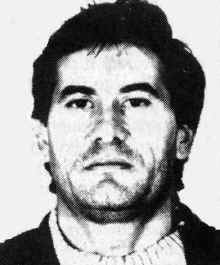Founded 1980s Founding location Casal di Principe | Years active 1980-present | |
 | ||
Criminal activities Murder, extortion, contract killing, drug trafficking, arms trafficking, racketeering, smuggling, prostitution, money laundering | ||
The Casalesi clan is a clan within the Camorra, an Italian criminal organization, operating from Casal di Principe in the province of Caserta between Naples and Latium. Formed by Antonio Bardellino, it is a confederation of clans in the Caserta area. The Casalesi clan is believed to be one of the most powerful groups within the Camorra, specialising in construction and keeping a lower profile than clans that focus on drug dealing. The clan is among the most powerful criminal organizations and influential in the world with approximately 150 to 160 zone leaders and 8000-9000 members.
Contents
History
In the 1980s, Bardellino realized that cocaine, not heroin, would become the more profitable drug and organized a trafficking operation smuggling it from Latin America to Aversa via a fish flour import-export business. Heroin was smuggled as well, and shipments to the Gambino crime family were concealed inside espresso filters. When one shipment was intercepted by the authorities, Bardellino reportedly called John Gotti and told him; "Don't worry, now we're sending twice as much another way".
During the Camorra war of the 1980s, the Casalesi sided with Nuova Famiglia against Raffaele Cutolo. In one incident, Casalesi members positioned a machine gun on a hill in Ponte Annicchino and opened fire, killing four Cutolo members. After the Casalesi achieved dominance in their area following the defeat of Cutolo, Antonio Bardellino settled in Santo Domingo with his family. But unrest grew within the Casalesi.
Heading up the clan's military operations were Francesco Schiavone and Francesco Bidognetti, and they thought Bardellino's right-hand man Mario Iovine was too close to Bardellino but did not approve of their plans for autonomy. They convinced Bardellino to order the murder of Iovine's brother, and then told Iovine that Bardellino had his brother killed based purely on a rumour. Iovine murdered Bardellino in retaliation in his Brazilian villa in 1988, meeting him under the pretext of discussing their cocaine operation. A number of men loyal to Bardellino were subsequently murdered.
Francesco Schiavone took over as leader. In the early 1990s another war broke out between Schiavone's men and those loyal to another boss, Vincenzo de Falco, who was shot dead in 1991. During this war Mario Iovine was also killed, sprayed by bullets by de Falco's men while in a telephone booth in Portugal. The war lasted four years. In March 2004, Francesco Schiavone's cousin, Francesco Cicciariello Schiavone, was arrested in Poland and charged with 10 homicides, three kidnappings, nine attempted homicides and extortion.
Spartacus trial
Following his arrest, all the police investigations into the clan were grouped together in the Spartacus Trial. Over 1,300 people were investigated and 500 witness took the stand. The trial against 36 members of the Casalesi clan finally concluded on June 19, 2008, after 10-years. Over the course of the trial five people involved in the case were murdered, including an interpreter. A judge and two journalists received death threats.
All defendants were found guilty and 16 will never be released. Francesco Schiavone, his lieutenant, Francesco Bidognetti, Antonio Iovine and Michele Zagaria were given life sentences.
Current status
The clan was jointly ruled by Michele Zagaria and Antonio Iovine, until the latter's capture and arrest on November 17, 2010. The clan was then led solely by Zagaria, until he too was captured on December 7, 2011. He was found in a bunker near his home province. The Casalesi clan is heavily involved in the cement and milk industries as well as the international drug trade, supplying drugs to the Mafia in Palermo and having alliances with Albanian mobsters and Nigerian crime syndicates. Their total assets are estimated to be worth around 30 billion euros.
On September 18, 2008 six African immigrants were shot dead on Castel Volturno in what is believed to be a dispute between the Casalesi and immigrant drug gangs. A riot followed the next day, and the Italian government has deployed 500 troops in the area to deal with the outbreak of Camorra violence.
